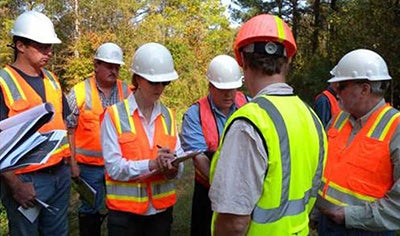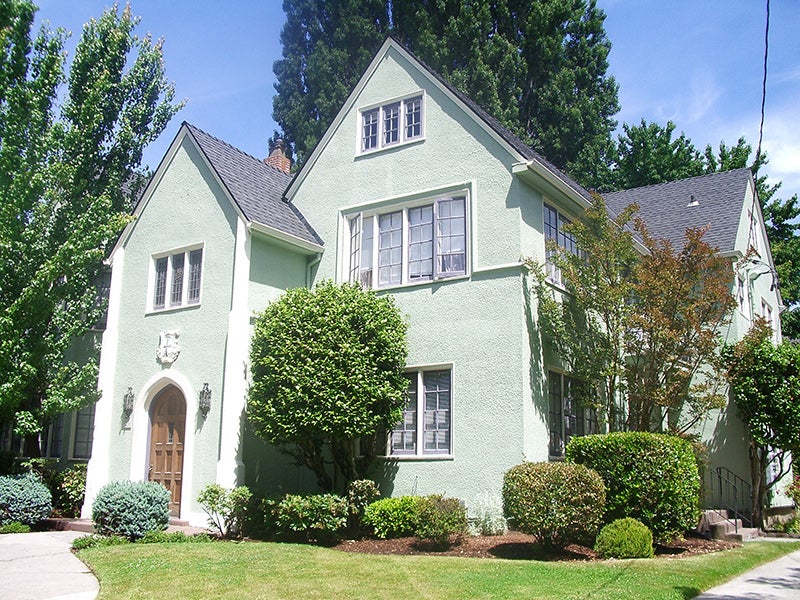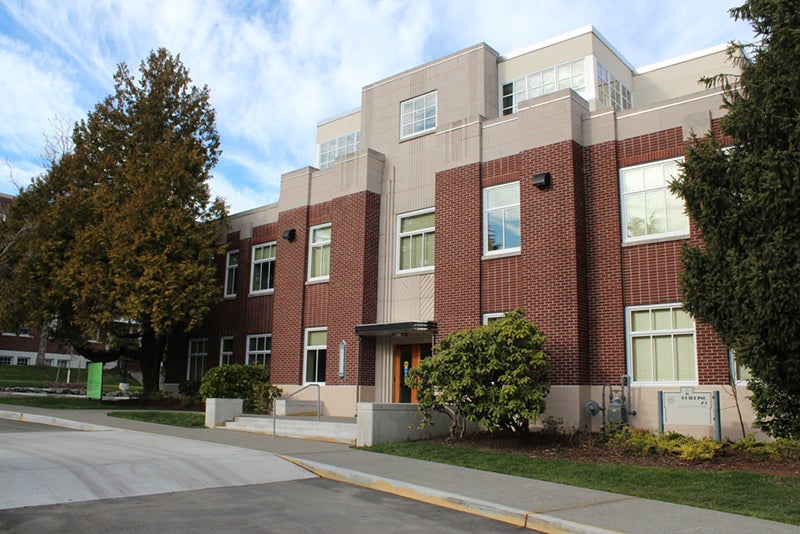master of science ’81
First UO preservation graduate makes her mark nationally
When most people see the phrase “Keystone XL Pipeline Project,” they think about endangered species, potential oil spills, land grabs, and maybe Canada. But UO alumnae Kimberly Demuth sees a lesser-known side of the behemoth proposal: the cultural resources and environmental protection opportunities, including facilitation with numerous agencies and Indian tribes.

Above: Demuth (third from left) works on the Keystone XL Pipeline EIS project, overseeing Section 106 and cultural resources for a Department of State client.
As a representative of Cardno ENTRIX, Demuth negotiated a third-party Environmental Impact Statement (EIS) with the U.S. Department of State, six State Historic Preservation Offices (SHPOs), the Advisory Council on Historic Preservation, and more than 100 American Indian tribes.
“It’s entailed a lot of meetings, a lot of work, a lot of calls, facilitation, and support to the Department of State,” says Demuth, MS ’81, whose titles at Cardno ENTRIX in Seattle include senior consultant, vice president/technical director, and vice president/principal/technical director of cultural resources.
But Keystone XL is just part of what Demuth—the first graduate of UO’s Historic Preservation Program—is tasked with at Cardno, where she was hired in 2000 to start a cultural resources management practice for the environmental services company.
At the time, Cardno had no cultural resources staff. “No historians, architectural historians, archaeologists,” Demuth says. Along with building a cultural resources division from scratch, Demuth—who had had her own cultural resources firm in Portland, Oregon, for sixteen years—was asked by Cardno to continue bringing in new projects and managing work in environmental planning and permitting. Much of that entails complex documentation through the National Environmental Policy Act (NEPA), the State Environmental Policy Act (SEPA), and the National Historic Preservation Act (NHPA), acronyms familiar to UO preservation students by the time they graduate.
Demuth didn’t expect to stay at Cardno for fourteen years and counting, but “my career has been fantastic,” she says during a half-hour telephone interview squeezed between meetings. Working at Cardno, she says, has provided “great people to work with, wonderful opportunities with clients, along with flexibility and support from the company to advance in my career, and that’s always been important to me.”
She’s stayed also because her work has never become staid. “I have worked in the transportation, development, energy, oil and gas, [and] mining markets. I have contributed to building market sectors [and having] flexibility to grow a national cultural resources practice.”
It’s far different from the career she envisioned when she entered the UO Historic Preservation Program. “I figured I’d be focused on historic interiors after I graduated. My undergraduate degree was fine art and design—drawing, painting, sculpture, ceramics, printmaking, oils, and watercolors—and I had worked as an interior designer for adaptive reuse architectural projects for several years prior to graduate school,” she says. “I hadn’t expected to move in the direction of being an architectural historian and also in the environmental field like I have, but it’s been wonderful. I never thought I’d work for an environmental consulting firm, never thought it was an opportunity for me. I had figured I’d be working for an architectural firm.”
She cites UO professors Phil Dole, Don Peting, Leland Roth, and Kenny Helphand with guiding her in the right directions. “One class that got my attention was Phil Dole’s class on understanding the Willamette Valley architectural influence from the Northeast, and understanding buildings in context with their surroundings. We studied a number of buildings throughout the Willamette Valley, looking at orientation, sensitivity to entrances, and plans and landscapes. That had a big influence on me,” she says. In other classes, as well, she found, “I really enjoyed the context of buildings in the landscape and I think that really helped me on my thesis, which was focused on historic districts.”

Above: A residence in the Irvington neighborhood of Portland, Oregon, 2008. Demuth was a resident of the Irvington neighborhood for many years. In 2008 she lead a Cardno team of architectural historians who worked with the Irvington Neighborhood Association to survey and nominate the neighborhood as a National Register of Historic Places Historic District. Demuth’s master’s thesis related to historic districts and the neighborhood is one of many historic districts she has helped evaluate and/or nominate during her career. Photograph courtesy Kimberly Demuth.
Experience with historic districts came in handy on one of her other major jobs while at Cardno: serving as historic preservation coordinator for projects located within the Sand Point Naval Air Station, which became Seattle’s eighth Landmark District in 2011. Sand Point was converted to civilian residential, educational, and recreational uses, including Magnuson Park, as well as wetland restoration. Demuth’s responsibilities for the project have spanned nearly a decade.
“A lot of buildings at Sand Point are [now] owned by the University of Washington, Solid Ground (a Seattle community advocacy program), or Seattle Parks and Recreation,” she says. Demuth and her staff work on adaptive reuse projects, working to ensure they meet National Park Service standards.
She is currently working on a carbon dioxide pipeline project in Wyoming, coordinating efforts with the Bureau of Land Management on an environmental impact statement, as well as “coordinating NEPA and Section 106 with our and with BLM management teams to make sure we assist BLM through the NEPA and 106 processes so all the agreements and EIS documents are completed.” (Section 106, a key element of the National Historic Preservation Act, requires federal agencies to review the effects on historic properties of proposed projects. A common example is during road projects when archaeological artifacts are evaluated, inventoried, and appropriately moved if required.)
The eighty-five cultural resources professionals now at Cardno ENTRIX owe their livelihoods to Demuth, who has shaped the cultural resources focus throughout the company. She has also hired numerous UO graduates to work at Cardno.
“I’ve stayed because of the people, clients, flexibility to build a national practice, and the mentoring I’ve received here,” she says. “As you go through your career you’re asked to wear different hats, and as you become more senior you mentor more. I love helping our staff engage in new opportunities.”

Above: Building 25 at the former Sand Point Naval Air Station, now Seattle’s eighth Landmark District. Demuth served as historic preservation coordinator for all the projects located within Sand Point. Demuth’s responsibilities for the project have spanned nearly a decade.
